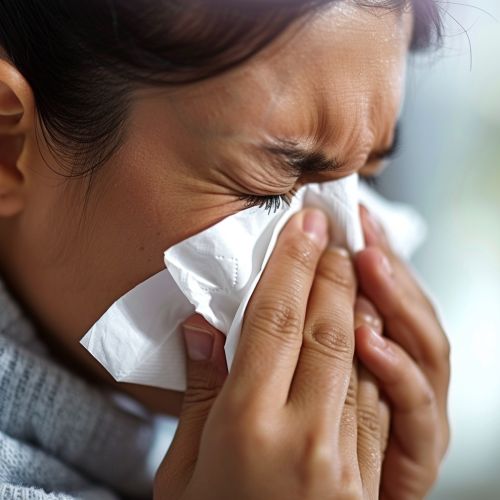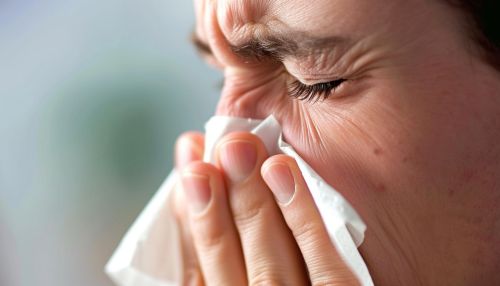Common cold
Introduction
The Common cold, also known as a cold, is a viral infectious disease of the upper respiratory tract that primarily affects the nose. The throat, sinuses, and voice box may also be affected. Signs and symptoms may appear less than two days after exposure to the virus. These may include coughing, sore throat, runny nose, sneezing, headache, and fever. People usually recover in seven to ten days, but some symptoms may last up to three weeks. In those with other health problems, pneumonia may occasionally develop.
Etiology
Well over 200 virus strains are implicated in causing the common cold, with Rhinovirus being the most common. They spread through the air during close contact with infected people or indirectly through contact with objects in the environment, followed by transfer to the mouth or nose. Risk factors include going to daycare, not sleeping well, and psychological stress. Symptoms are mostly due to the body's immune response to the infection rather than to tissue destruction by the viruses themselves. People with influenza often show similar symptoms as people with a cold, but symptoms are usually more severe in the former. Influenza is less likely to result in a runny nose.
Pathophysiology
The viruses that cause a common cold are contagious. They can spread from person to person through the tiny droplets that are released when a sick person sneezes, coughs, or blows their nose. You can catch a cold if you touch your eyes, mouth or nose after you've touched something contaminated by the virus. You can also inhale the droplets from the air.
The virus attaches to the lining of your nose or throat. Your immune system sends white blood cells out to attack this invader. Unless you've had a run-in with that exact strain of the virus before, the initial attack fails and your body sends in reinforcements. Your nose and throat get inflamed and produce a lot of mucus. With so much of your energy directed at fighting the cold virus, you're left feeling tired and miserable.
Diagnosis
One of the ways to prevent a common cold is to recognize the symptoms. These include a runny nose, sneezing, and congestion. You may also have a sore throat, cough, headache, or other symptoms.
Prevention
There is no vaccine for the common cold. The primary methods of prevention are hand washing; not touching the eyes, nose or mouth with unwashed hands; and staying away from sick people. Some evidence supports the use of face masks. No medication or herbal remedies have been conclusively demonstrated to shorten the duration of symptoms. Symptoms usually resolve in seven to ten days, but can last up to three weeks. Over-the-counter medication may be used to improve symptoms.
Treatment
Treatment of the common cold primarily involves symptom relief. This includes the use of pain medication, proper hydration, and rest. Cough medicines are not usually effective and are not recommended for children due to the risk of side effects. Intranasal corticosteroids are not recommended for common cold symptoms.


Epidemiology
Colds are generally milder than flu. People with colds are more likely to have a runny or stuffy nose. Colds generally do not result in serious health problems. In the United States, adults average two to three colds per year, and children have even more.
